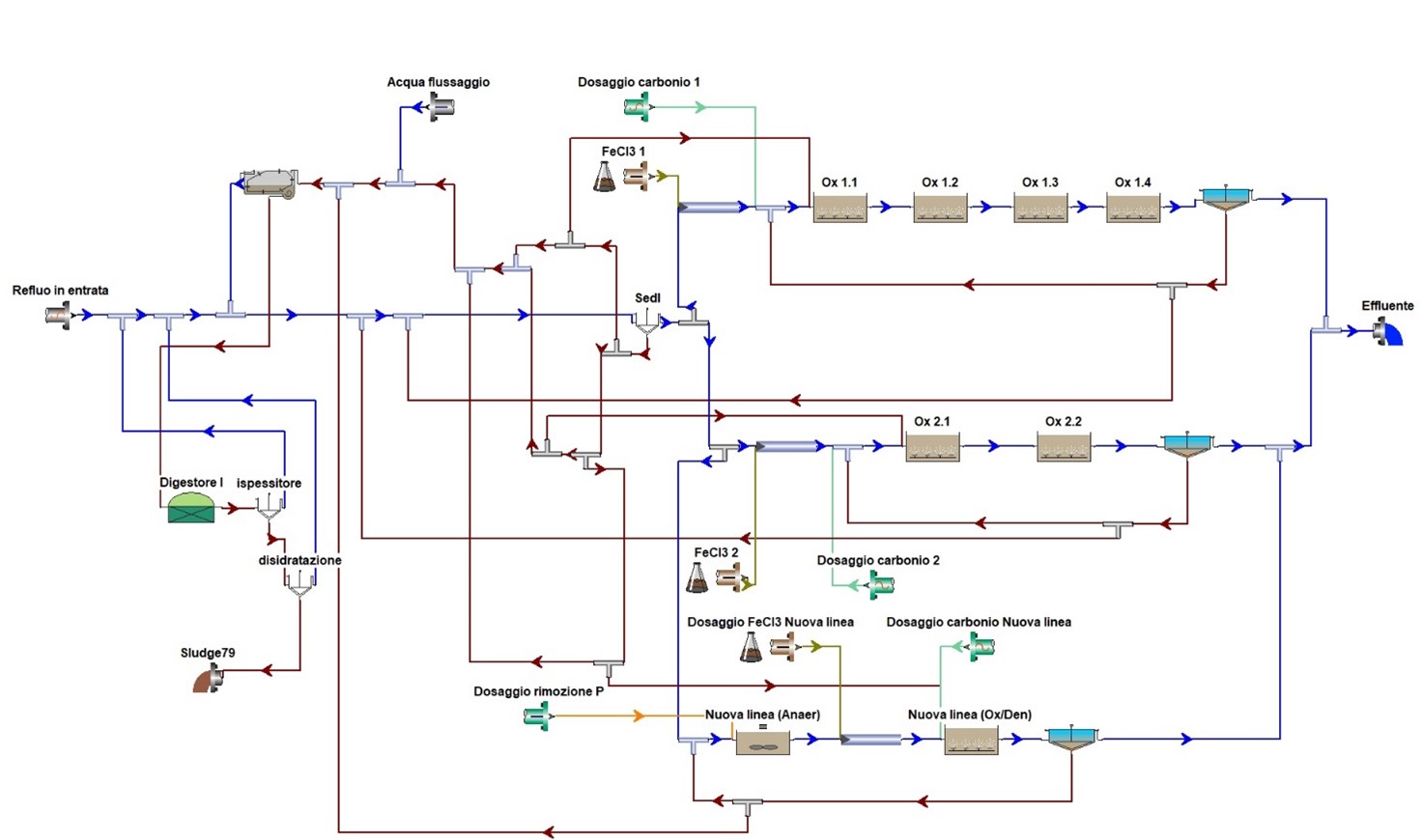Particularly complex plant configurations can only be reproduced and simulated through a simulation software, and Figure 10 shows an example.

Figure 10: example of model layout concerning a complex plant configuration
The configuration shown in Figure 10 is totally divergent from the conventional ones, consisting of different reactors in series and being characterized by many internal recirculation lines which makes difficult to reproduce the mass balance. The model, realized through a simulation software, can automatically calculate the mass balance giving an estimation of the concentrations in every point as well as of the effect of the recirculation on every chemical, biochemical and physical process occurring on the plant.
It’s important to note how the treatment line receive the overflow related to the thickening of the anaerobic digestion sludge, as well as the waters coming from the dewatering of the same sludge. This is pretty common where a WWTP is coupled with the anaerobic digestion of sludges, and it makes the process calculation more complex. In fact, the above-mentioned recirculation is commonly characterized by high ammonia concentrations and, considered the anaerobic conditions in the digesters, they could be also rich in phosphate that are released by the PAOs.
The conventional calculation methods don’t allow the reproduction of the recirculation, reason why they are usually considered as external loads when it comes to check or design a WWTP. Of course, this is not a correct practice since the nutrients are only recirculated inside the plant and they don’t really represent a further inlet load. In the most recent simulation software, the process equations related to the anaerobic digestion (AD) processes are integrated in the ASMs (describing the WWT processes) allowing to simulate the whole system (AD+WWTP) and so the all the recirculation and their effects on the biological reactors. Moreover, the simulation of the AD allows to get an estimation of the concentrations and fractionations of the pollutants in the waters coming from the dewatering of the anaerobic sludge and from its thickening (info that are usually missing).
